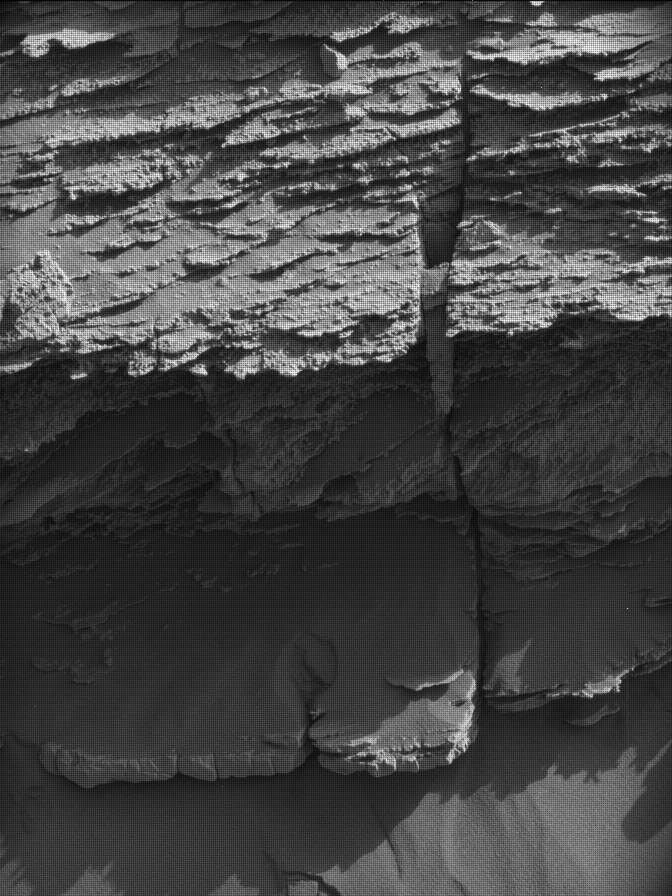Earth planning date: Friday, September 1, 2023
Most long weekend plans are packed with lots of fun science, and this weekend’s plan - to get us through the US Labor Day holiday - was no exception. But the way this one was packed had an unusual pattern to it - many of our activities came in pairs! The rarest pair was two separate uses of the DRT - it has been more than 200 sols since we last had such luck. The soon-to-be-much-cleaner block is the brightly-illuminated one near the center of the workspace. One DRT will cover the fractured texture near the bottom of the block (on the target “Areopoli”), and the second will cover the lumpy texture near the top of the block (on the target “Artemisio”). This duo is covered by paired MAHLI and APXS analyses, and one of the pairs of Mastcam multispectral observations. The second Mastcam multispectral observation is on a part of the “Zagori” dune field that hugs the base of the rise we are driving along. Mastcam's other activity pairs include two large mosaics that together capture kilometers of terrain east of us, two atmospheric dust observations, and two activities that monitor the state of the rover. ChemCam long distance RMI mosaics came in twos - one aimed nearly 40 kilometers away at the Gale crater rim, and the other aimed to continue our documentation of the amazing layers of the “Kukenan" butte. The second and third sols of the plan have a pair of ChemCam LIBS rasters. One target “Kissamos,” crosses some of the beautiful layers present in the workspace, and the second, “Amphipolis,” focuses on a gray block that wandered down from the Gediz Vallis Ridge. The first sol of the plan also has a pair of ChemCam activities, but they are more fraternal twins rather than identical ones. ChemCam will target Areopoli for a LIBS raster (even more information from this target!), and then will turn its gaze to sky for passive sky observation. Navcam gets pairs of sky-gazing activities across the plan, with two cloud movies and two dust devil monitoring activities.
There are, of course, many one-hit wonders in the plan (like a MARDI twilight image), and other activities too good to do just twice (REMS, RAD, and DAN). But as we roll into the weekend, let’s celebrate the dynamic duos of the plan!
Written by Michelle Minitti, Planetary Geologist at Framework





































